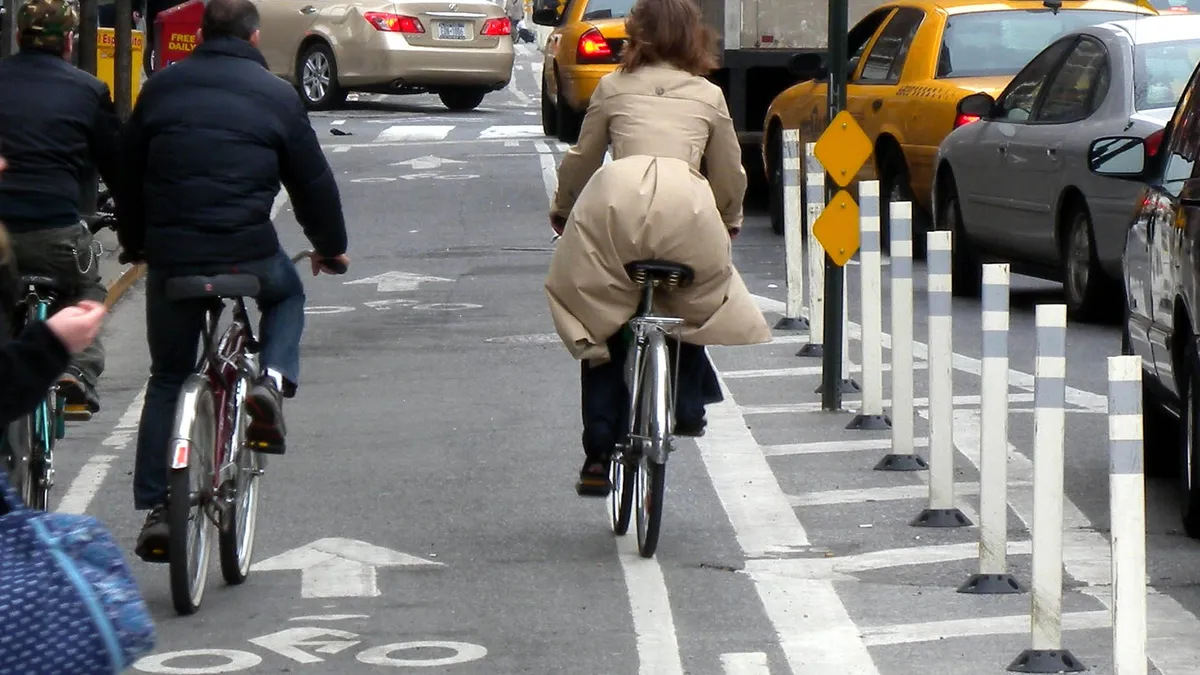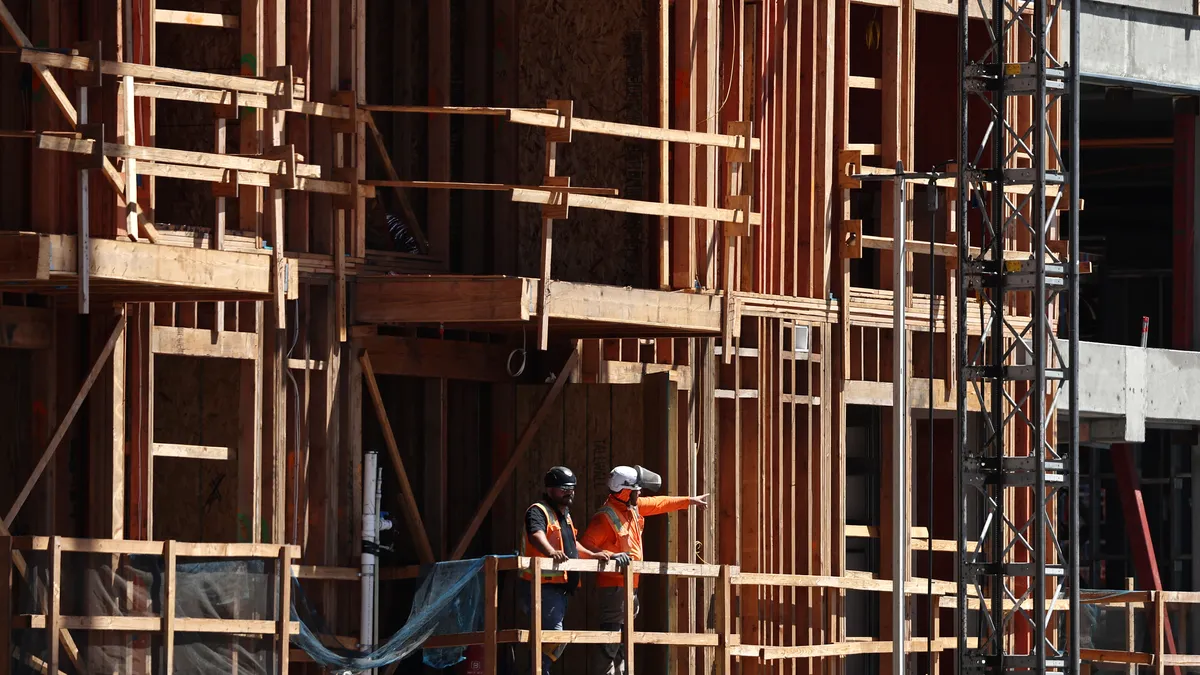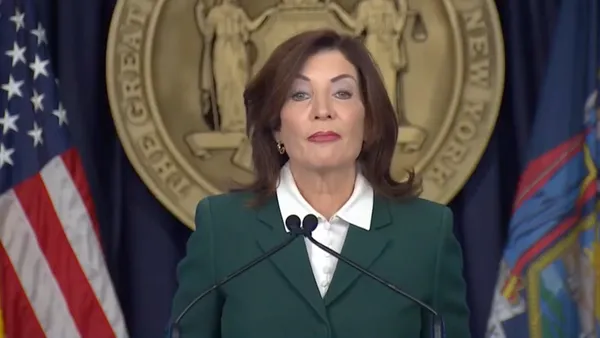Dive Brief:
- New York Mayor Bill de Blasio announced a bicycle plan, Green Wave, to improve cycling infrastructure and cyclist safety across the city. The measure follows outcry for change from cycling advocates and the public in light of 17 cyclist deaths on city streets already this year, up from 10 for all of last year.
- The $58.4 million plan contains concepts involving infrastructure design, rule enforcement, legislation, policy and education to increase street safety. Some specific elements are: building 30 miles of protected bike lanes each year, with the goal of 80 miles by 2021; implementing new design standards to increase intersection safety; targeting enforcement of high-risk behaviors including speeding, failing to yield and blocking bike lanes; expanding the Off-Hour Deliveries Program; supporting policies and legislation targeting cyclist and vehicle driver behavior; and launching the next phase of the Vision Zero educational campaign.
- "These last weeks have been something that should never be repeated in this city. And today, we take another step to try once and for all to prevent it. Because that's the whole idea of Vision Zero," de Blasio said during a news conference. "The fact that this all happened in such a small amount of time, it's a crisis, it's an emergency."
Dive Insight:
De Blasio began the news conference by referencing the uptick in traffic deaths and taking a moment of silence to remember the 17 cyclist lives lost. He said the past few weeks have been painful and the city must take measures to change and improve citizens' safety.
He noted that the improvements — especially protected bike lanes — will be strategically dispersed around the city. "We're going to do this all over the city. We want every bicyclist to feel safe," he said.
The Green Wave plan includes analyses by the city's Department of Transportation (DOT) of bike fatalities since 2014. DOT found that 60% of the fatal accidents occurred at intersections, nearly 90% were on streets without bike lanes and 23% involved cyclists disobeying a red light signal. Brooklyn has had a notably higher proportion of cyclist fatalities than other boroughs, at 40%. This year alone, 71% of the fatalities occurred in Brooklyn.
DOT also notes an uptick in truck-related fatalities in recent years. They account for 30% of accidents since 2014, and 53% just this year so far. Although the plan does not suggest causation, it's plausible that the increase in truck-related fatalities correlates to the increase in e-commerce deliveries. New York has taken steps recently to reduce truck incidents on city streets, including a push to triple the number of businesses that accept deliveries from 7 p.m. to 6 p.m. when vehicle, cyclist and pedestrian traffic is less frequent than during daytime hours.
In addition to further expanding off-hours deliveries, the Green Wave plan aims to expand residential loading zones for trucks, which creates a safe space for drivers to park without blocking bike lanes and roadways. The city will launch a Truck Safety Task Force and increase law enforcement efforts to reduce incidents between trucks and cyclists.
Besides the protected bike lane installations, infrastructure improvements include traffic calming at intersections with high rates of bike injuries and expanding the use of green paint on portions of bike lanes where drivers and cyclists need to pay extra attention. Police will step up enforcement of blocked bike lanes, hazardous driving violations and off-route or oversized trucks. They will also discontinue the practice of ticketing cyclists immediately following where a fatal crash has occurred.
While Green Wave brings together efforts from a number of city departments, the Department of Transportation will carry much of the load. A portion of the initiative's funding will go toward hiring 80 new DOT employees to implement the new measures.
Some believe the Green Wave plan isn't comprehensive enough. One Streetsblog NYC post decries the plan's lack of trying to reduce the number of vehicle drivers on the road. Still, the plan has garnered widespread accolades from cycling and safety advocates, including a competing article on Streetsblog NYC that says the "long overdue" plan finally addresses the problem of cyclist safety and will make a difference.











